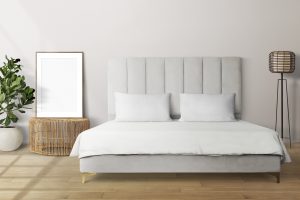Elements of design are guidelines to help you balance your interior scheme in order to create a finished look that is aesthetically pleasing, but also functional. Design is a science as much as an art. Addressing each element that creates every designed space is made to enhance an area’s best features, hide flaws, and create a space that is alluring to the eye.
LINES: The structural features, room’s furnishings and accent pieces all contribute and create lines that influence the feel of the space your creating, and they can also inspire attention to a focal point. As well as horizontal and vertical, they can be dynamic.
Horizontal lines, such as tables, bring stability to any interior. They can also make a room feel wider. The vertical lines of the room come from features such as windows and doors. They’re admired for giving a feeling of openness and can make a room seem taller and/or wider. Choosing a tall piece of furniture, for example, can lead the eye upwards and visually heighten the room. In any scheme a balance between horizontal and vertical lines is absolutely essential.
Dynamic lines like diagonals, zigzags and curves could come from a feature such as a spiral staircase, but also can be created with tiling laid diagonally. They’re eye-catching and they inject a scheme with unique energy. The majority of interiors make use of both natural light and artificial illumination. While the quantity and quality of daylight might seem fixed, it’s worth remembering that it can be filtered with drapery and window coverings.




